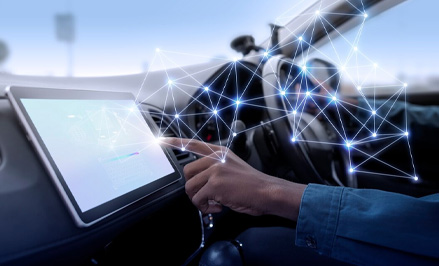End-to-End Automation with AI and Machine Learning
refers to the complete automation of a business process or workflow from start to finish, with minimal or no human intervention, using advanced technologies like Artificial Intelligence (AI) and Machine Learning (ML). This form of automation leverages AI and ML to not only perform repetitive tasks but also make intelligent decisions, predict outcomes, and continuously improve over time.
Here’s how it works and its key components

Full Process Automation
• Start to Finish Automation: Every step of a workflow or process is automated, from data collection to processing, decision-making, and reporting, without manual involvement.
• AI and ML Integration: AI and ML algorithms are used to handle complex decision-making, adapt processes based on real-time data, and predict future outcomes, ensuring smarter and more efficient automation.

Data-Driven Automation
• Data Collection and Analysis: AI systems analyze vast amounts of structured and unstructured data to identify trends, patterns, and anomalies. This data is used to inform decisions and automate subsequent actions.
• Predictive Analytics: Machine learning models analyze historical data to predict future events or outcomes, allowing the system to anticipate needs and act proactively.

Intelligent Decision-Making
• AI-Powered Logic: Unlike traditional automation, which relies on predefined rules, AI systems use real-time data and learning algorithms to make informed decisions.
• Adaptive Learning: Machine learning enables the automation process to learn from its actions, improving its efficiency and accuracy over time. The system can adjust its operations dynamically based on outcomes and feedback.

Seamless Integration
• Cross-Platform AutomationEnd-to-end automation integrates different systems, platforms, and tools across an organization, allowing information and processes to flow seamlessly from one stage to the next.
• API and Workflow Orchestration: AI-driven automation coordinates multiple systems and processes, ensuring that tasks across departments or functions are automated efficiently.

Error Reduction and Optimization
• Real-Time Monitoring and Correction: AI and machine learning can identify and correct inefficiencies or errors in the process autonomously, optimizing workflows continuously.
• Automated Feedback Loops: ML algorithms use feedback from completed tasks to refine future processes, reducing error rates and improving the overall quality of automation.

Autonomous Systems
• Self-Sustaining Processes End-to-end automation systems can self-monitor, self-heal, and self-optimize using AI and ML, reducing the need for manual oversight.
• Robust Decision Automation: AI can make autonomous decisions, such as adjusting inventory levels in supply chains or approving transactions in finance based on real-time data and historical trends.

Use Cases and Applications
• Customer Support: AI-driven chatbots handle customer inquiries from initial contact to resolution, escalating to human agents only when necessary.
• Finance: Automated invoice processing, fraud detection, and financial reporting are managed end-to-end using AI and ML.
• Supply Chain: AI optimizes the supply chain, from demand forecasting to inventory management and logistics, ensuring timely and efficient delivery.

Continuous Improvement
• Learning from Data: Machine learning algorithms continuously learn from new data, improving the accuracy and efficiency of the automated process.
• Process Optimization: AI-driven automation identifies bottlenecks and areas of inefficiency and automatically optimizes the process for better outcomes.
Follow Us
Our Case Studies
Key Benefits
Increased Efficiency
AI and ML allow for faster decision-making and automation of complex tasks, reducing processing times.
Cost Reduction
End-to-end automation cuts down manual labor and operational costs by automating entire workflows.
Scalability
Businesses can scale their operations without adding significant resources, as AI and ML handle increasing workloads.
Enhanced Adaptability
Machine learning allows the system to adapt to changing conditions and improve over time.
Improved Accuracy
AI reduces human error and ensures consistent quality in decision-making and task execution.






























